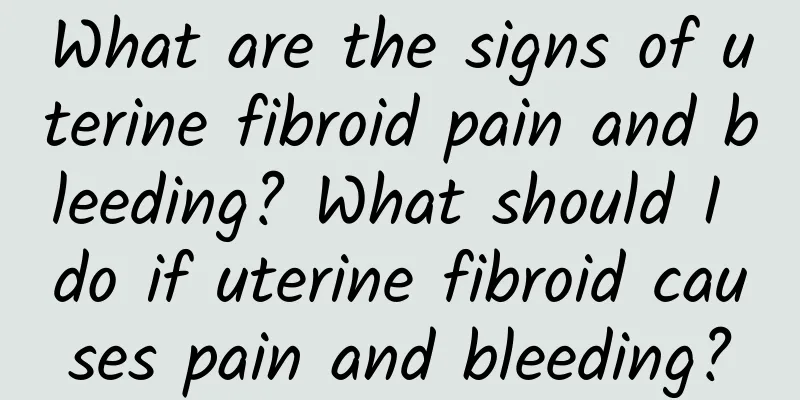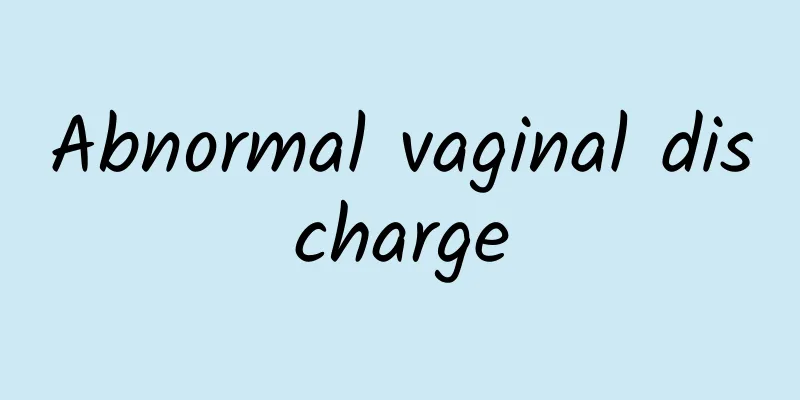What are the signs of uterine fibroid pain and bleeding? What should I do if uterine fibroid causes pain and bleeding?

|
What are the signs of uterine fibroid pain and bleeding? What should I do if uterine fibroid causes pain and bleeding? introduction Uterine fibroids are common benign tumors in women that usually appear in the lining or myometrium of the uterus. Although most uterine fibroids are asymptomatic, some may cause pain and bleeding. This article will discuss the signs and treatment of pain and bleeding caused by uterine fibroids. What are uterine fibroids? Uterine fibroids are tumors that grow in the lining or myometrium of the uterus and are usually benign. Uterine fibroids can range in size from as small as a peanut to as large as a basketball. Most uterine fibroids cause no symptoms, but a few cause pain and bleeding. What is the sign of pain? Uterine fibroids can cause varying degrees of pain. The pain may be constant or intermittent and may get worse or less severe. The intensity and area of pain will vary depending on the location and size of the fibroids. Some patients may experience tenderness in the abdomen or pelvic area, while others may experience pain in the vaginal or rectal area. What are the signs of bleeding? In addition to pain, uterine fibroids may cause abnormal bleeding. Bleeding may occur outside of your menstrual cycle, or your menstrual flow may be unusually heavy. Sometimes, bleeding may cause anemia, which is caused by excessive blood loss. In addition to abnormal menstrual cycles, uterine fibroids may cause your periods to become shorter, your bleeding to last longer, or your bleeding to become more frequent. What should I do if uterine fibroids cause pain and bleeding? When you find yourself with the above symptoms, the first step should be to see a gynecologist as soon as possible. The gynecologist can confirm the presence of uterine fibroids through physical examination and related examinations. Commonly used examination methods include B-ultrasound, MRI, intrauterine ultrasound and transcervical biopsy. Treatment options depend on the size and number of fibroids, the symptoms they cause, and the patient's age. For patients with no symptoms or mild symptoms, observation is usually the right approach. For patients with pain and bleeding, medications such as nonsteroidal anti-inflammatory drugs and oral contraceptives may be necessary. For patients with severe pain and bleeding, surgery may be necessary, including a hysterectomy or myomectomy. Summarize Although most uterine fibroids are asymptomatic, some patients may experience signs of pain and bleeding. The pain may be constant or intermittent, while bleeding may occur outside of the menstrual cycle and be abnormally heavy. When these signs occur, it is crucial to see a gynecologist promptly. The gynecologist can develop an appropriate treatment plan for the patient based on the examination results, which may include observation, medication, or surgical removal. With timely treatment and management, symptoms can be relieved and quality of life can be improved. |
Recommend
What are the common methods for treating adnexitis?
What are the common methods for treating adnexiti...
What Chinese medicine is good for cervical warts
Traditional Chinese medicine has a long history a...
To prevent cervical erosion, you need to pay attention to fertility-related
Due to the special nature of the uterus, the prev...
Factors causing endometrial tuberculosis
Due to various reasons, the endometrium grows in ...
Will eating cut-edge toast for breakfast make you lose weight? Does raw toast make you fat? Are whole wheat the healthiest? A comparison of the calories of 5 types of toast
During the epidemic, when ordering breakfast deli...
Don’t dare to eat after exercise? wrong! 2 hours to eat a full meal
Some people can't help but shout after exerci...
What are the symptoms of uterine fibroids? Can uterine fibroids induce cervical cancer?
Uterine fibroids bring great pain to patients, an...
What are the dangers of medical abortion? There are three major dangers
The drugs commonly used for medical abortion are ...
[Video version] Do coriander and carrots have a strange smell? Turn 6 kinds of "disgusting foods" into happy and delicious foods
"Boss, I want a bowl of rice noodles without...
Common symptoms of uterine fibroids
Uterine fibroids are the most common benign fibro...
Symptoms of Trichomonas vaginitis
Trichomonas vaginitis is a common gynecological i...
Skinny people don’t need to lose weight? The puff tribe has too much body fat
When weighing themselves, some people congratulat...
How to check for habitual miscarriage? There are 5 items
Habitual abortion has many similarities with gene...
What are the symptoms of adenomyosis and adenomyoma?
The main symptoms of adenomyosis and adenomyoma i...
Certain diseases may cause irregular menstruation
Many women have irregular menstruation, but the s...









